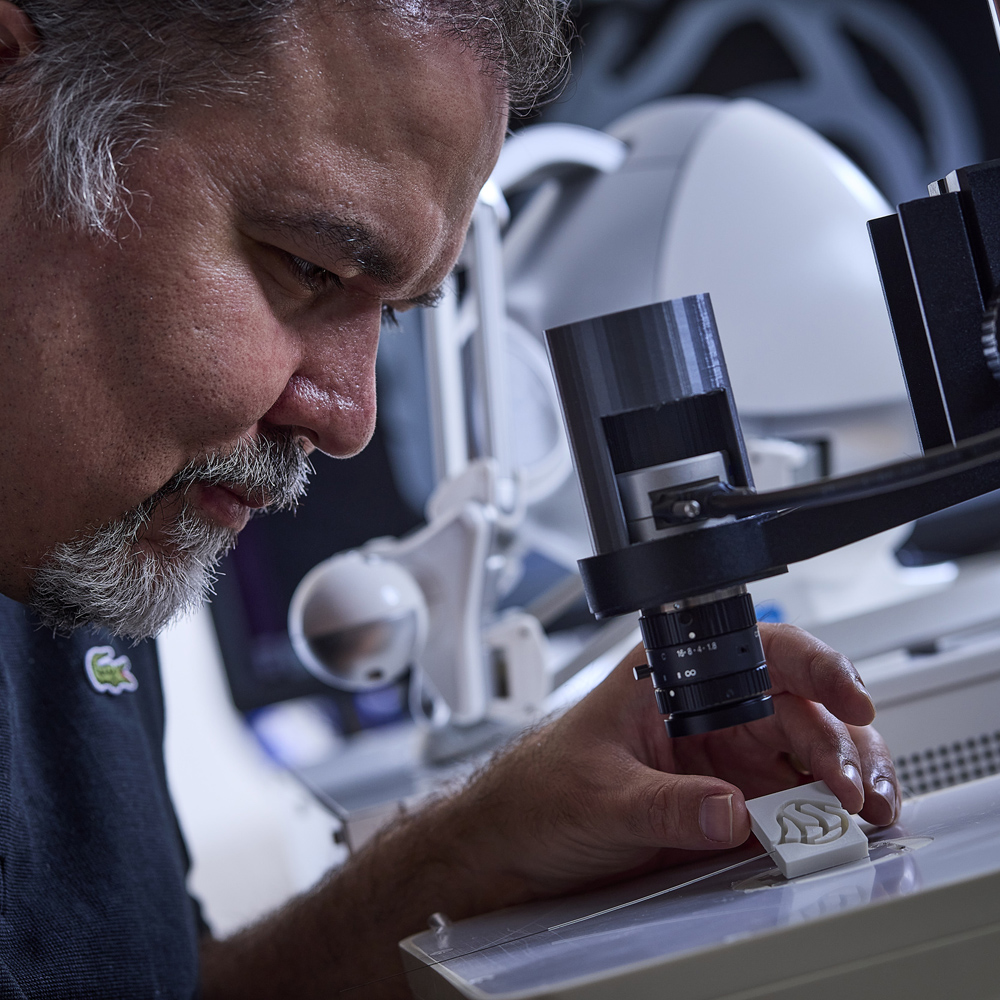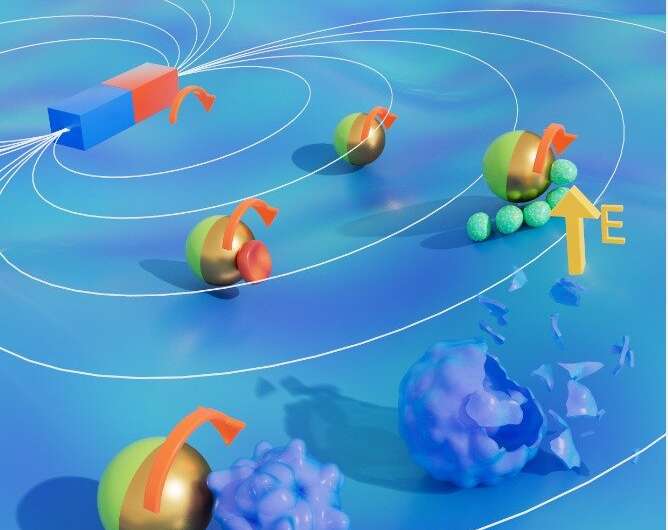
Dr Ali Hoshiar
Swarms of microrobots injected into the human body could unblock internal medical devices and avoid the need for further surgery, according to new research from the University of Essex.
The study is the first-time scientists have developed magnetic microrobotics to remove deposits in shunts – common internal medical devices used to treat a variety of conditions by draining excess fluid from organs.
Shunts are prone to malfunctioning, often caused by blockages due to a build-up of sediment. The sediment not only narrows and obstructs liquid passing through the shunt, but it also affects the shunt’s flexibility. This leads to patients needing repeated, invasive surgeries throughout their lives either to replace the shunt or use a catheter to remove the blockage.
However, this new research, led by microrobotics expert Dr Ali Hoshiar, from Essex’s School of Computer Science and Electronic Engineering, has shown there could be a wireless, non-invasive alternative to clearing the blockage in a shunt.
Published in the IEEE Transaction on Biomedical Engineering journal, Dr Hoshiar and his team have shown that a swarm of hundreds of microrobots – made of nano size magnetic nanoparticles – injected into the shunt could remove the sediment instead.
“Once the magnetic microrobots are injected into the shunt they can be moved along the tube to the affected area using a magnetic field, generated by a powerful magnet on the body’s surface,” explained Dr Hoshiar. “The swarm of microrobots can then be moved so they scrape away the sediment, clearing the tube.
“The non-invasive nature of this method is a considerable advantage to existing methods as it will potentially eliminate the risk of surgery and a surgery-related infection, thereby decreasing recovery time.”
With each microrobot smaller than the width of a human hair, once the swarm has done its job, it can either be guided to the stomach via a magnetic field or bodily fluid, so they leave the body naturally. Because the microrobots have very high biocompatibility they will not cause toxicity.
The research also found a direct relation between the strength of the magnetic field and the success of scraping away the sediment in the shunt.
This is the first proof-of-concept experiment using microswarms for opening a blockage in a shunt. The next stage of this research is to work with clinicians to carry out trials. The researchers are also looking at how the concept can be used to other applications.
Original Article: Microrobots could unblock medical devices in the body
More from: University of Essex
The Latest Updates from Bing News
Go deeper with Bing News on:
Magnetic microrobotics
- magnetic stirrer
Magnetic stirrers are a core part of many chemistry labs. They offer many advantages for ensuring the effective mixing of solutions compared to other methods of stirring, including consistency ...
- The Best MagSafe Chargers for 2024
Here's what you need to know about Apple's magnetic charging standard, along with the best ones you can buy. I’m one of PCMag’s mobile analysts. That means I check out phones, hotspots ...
- Scientists Found Evidence of the Magnetic Field in 3.7 Billion-Year-Old Rocks
Magnetic fields make life possible on Earth by protecting the planet from the Sun's harmful cosmic rays. A new study found the oldest evidence yet of this field’s existence in iron-rich rocks in ...
- Magnetic Reconnection
Welsch, Brian T. and Longcope, Dana W. 1999. Statistical Properties of Magnetic Separators in Model Active Regions. The Astrophysical Journal, Vol. 522, Issue. 2, p ...
- Rumor: Nintendo Switch 2 Could Have Magnetic Joy-Cons
A rumor claims that the next Nintendo console could have magnetic Joy-Cons, replacing the rail system used by the current Switch Joy-Cons. The rumored Nintendo Switch successor may feature ...
Go deeper with Bing News on:
Microswarms
- Feed has no items.










